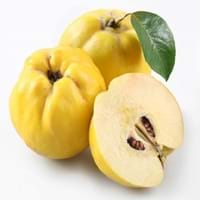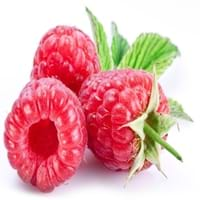Health Benefits
Cancer prevention, Cures gastro-intestinal troubles, Reduces nervous tension, Ulcer prevention
Cancer prevention, Heart care, Prevents macular degeneration, Reduces blood circulation problems
General Benefits
Anti oxidant properties, Anti-inflammatory properties, Boosts immune system, Controls blood pressure, Digestive aid, Eye care, Helps in weight loss, Improves blood circulation, Maintains healthy cholesterol level
Anti-inflammatory properties, Controls blood sugar levels, Digestive aid, Eye care, Helps in weight loss
Skin Benefits
Anti-aging benefits, Reduces wrinkles
Anti-aging benefits, Brightens and lightens complexion
Hair Benefits
Regulates hair growth
Acts as moisturizer, Regulates hair growth, Shiny hair
Allergy Symptoms
NA
Breathing difficulty, Eczema, Hives, Itching, Nasal congestion, Runny nose, Sneezing, Watery eyes, Wheezing
Side Effects
Allergic reaction
Allergic reaction
Best Time to Eat
As a snack in the late afternoon, Don't consume at night and before bed, Eat the fresh ones, avoid mixing with any other foods, don't eat after meal., Morning time (before lunch)
Best if taken as a breakfast (or empty stomach), As a snack in the late afternoon, Don't eat after meal, Morning time (before lunch)
Vitamin B5 (Pantothenic Acid)
Vitamin C (Ascorbic Acid)
Vitamin E (Tocopherole)
Not Available
Vitamin K (Phyllochinone)
Not Available
Lutein+Zeaxanthin
Not Available
Calories in Fresh Fruit with Peel
Calories in Fresh Fruit without Peel
Not Available
Not Available
Calories in Frozen Form
Not Available
Calories in Canned Form
Not Available
Varieties
Meech’s Prolific, Lusitanica, Champion and Vranja AGM
Amity, August Red, Boyne, Canby, Caroline, Comet, Dinkum, Dorman Red, Latham, Meeker, Black Hawk, Hayda, Lauren, Meeker and Latham
Color
Green, Yellow
Black, Purple, Red, Yellow
Origin
Iran, South-West Asia, Turkey
Europe, North Asia
Soil Type
Loam, Well-drained
Sandy loam
Climatic Conditions
Warm
Cold
Facts about
- Due to its strong & fruity aroma, brides consumed quince to ensure "perfumed lips".
- It is also called as ‘Pear of Cydonia’, being native to Caucasus and Iran.
- They call it as the ‘golden apple’ of Greek Mythology.
- There are more than 200 varieties of raspberries.
- In USA, 90% of the raspberries are grown in Washington, California and Oregon.
- They do not ripe after they are picked.
- A raspberry contain 100 to 120 seeds.
Top Producer
Turkey
Russia
Other Countries
Algeria, Argentina, Azerbaijan, China, Iran, Morocco, Serbia, Spain, Uzbekistan
Azerbaijan, Canada, Mexico, Poland, Serbia, Spain, Ukraine, United Kingdom, United States of America
Top Importer
United States of America
United States of America
Top Exporter
Argentina
Poland
Botanical Name
Cydonia oblonga
Rubus Idaeus
Synonym
C. vulgaris
Not Available
Subkingdom
Tracheobionta
Tracheobionta
Division
Magnoliophyta
Magnoliophyta
Class
Magnoliopsida
Magnoliopsida
Species
C. oblonga
R. idaeus
Difference Between Quince and Raspberry
We might think that Quince and Raspberry are similar with respect to nutritional value and health benefits. But the nutrient content of both fruits is different. Quince and Raspberry Facts such as their taste, shape, color, and size are also distinct. The difference between Quince and Raspberry is explained here.
The amount of calories in 100 gm of fresh Quince and Raspberry with peel is 57.00 kcal and 53.00 kcal and the amount of calories without peel is Not Available and Not Available respectively. Thus, Quince and Raspberry belong to Low Calorie Fruits and Low Calorie Fruits category.These fruits might or might not differ with respect to their scientific classification. The order of Quince and Raspberry is Rosales and Rosales respectively. Quince belongs to Rosaceae family and Raspberry belongs to Rosaceae family. Quince belongs to Cydonia genus of C. oblonga species and Raspberry belongs to Rubus genus of R. idaeus species. Beings plants, both fruits belong to Plantae Kingdom.









